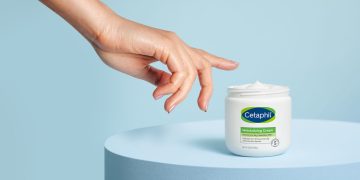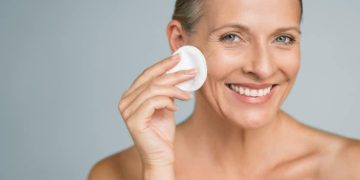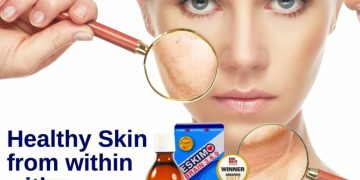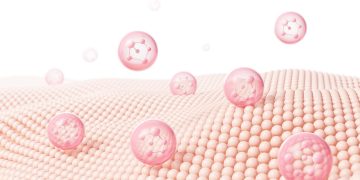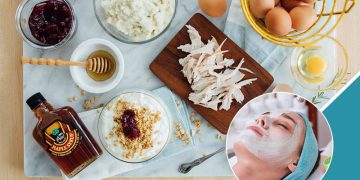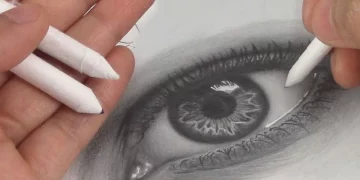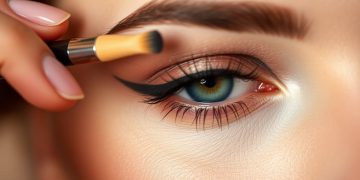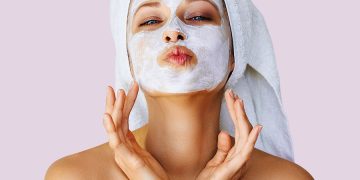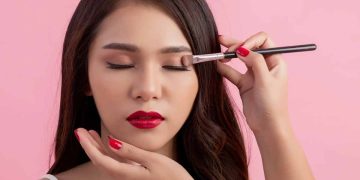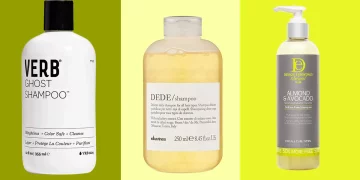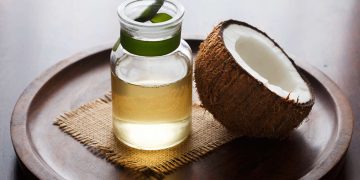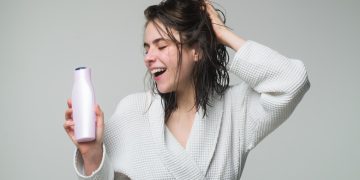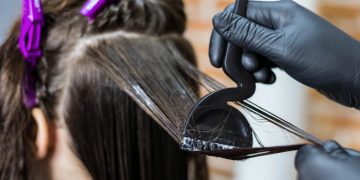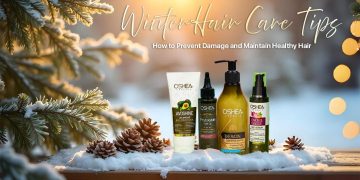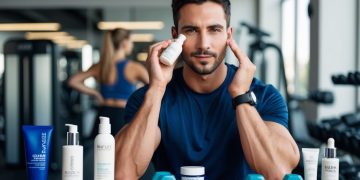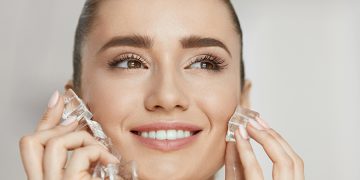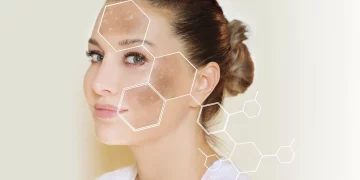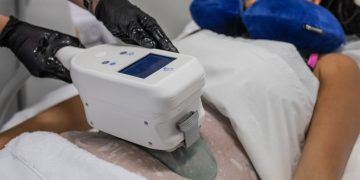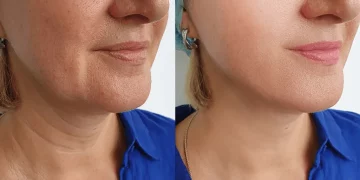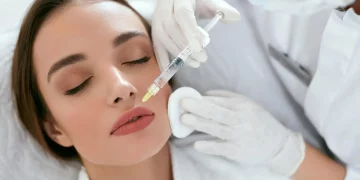Introduction
In the quest for sleek, shiny, and perfectly styled hair, many of us rely on heat styling tools like hair dryers and flat irons to achieve our desired looks. However, frequent exposure to high temperatures can lead to hair damage, including dryness, split ends, and weakened strands. Heat damage is one of the most common concerns for hair enthusiasts, and the need for effective solutions has never been greater. In fact, many consumers are seeking ways to use their heat styling tools more safely while still achieving professional-looking results.
In this article, we will explore the dangers of heat damage, the science behind hair’s response to heat, and offer tips on how to use blow dryers and flat irons in a way that minimizes hair damage. Whether you’re looking to repair hair that’s already been damaged or prevent further harm, we’ll also discuss repair solutions that can help restore your hair’s health.
1. Understanding Heat Damage: Why Does Heat Hurt Our Hair?
To better understand how to protect our hair from the damaging effects of heat, it’s important to first understand how heat impacts the structure of hair. Hair is primarily composed of a protein called keratin, which gives it strength and elasticity. When exposed to high temperatures, the hair’s internal structure is affected in several ways:
- Moisture Loss: Heat causes the moisture in hair to evaporate, leading to dry, brittle strands. When hair becomes too dry, it’s more prone to breakage, split ends, and frizz.
- Cuticle Damage: The outer layer of the hair, called the cuticle, is made up of overlapping scales that protect the inner structure of the hair. Heat can cause these scales to lift or crack, exposing the cortex (the middle layer), which weakens the hair shaft.
- Protein Damage: Keratin, the protein that forms the core of hair, can also be damaged by excessive heat. Over time, this results in weaker, thinner hair that lacks vitality and strength.
When hair is exposed to excessive or repeated heat styling, the damage accumulates, making it harder to restore hair to its natural, healthy state. Thus, understanding how to use heat styling tools properly is critical for maintaining healthy hair.
2. Choosing the Right Heat Styling Tools: What to Look For
One of the first steps in minimizing heat damage is selecting the right heat styling tools. With so many options available, it’s essential to understand what features will best protect your hair while achieving your desired results.
a. Temperature Control
When it comes to both blow dryers and flat irons, temperature control is a must. High heat can cause significant damage, but using the lowest possible heat that still gets the job done will help protect your hair.
- Flat Irons: Look for flat irons that allow you to adjust the temperature based on your hair type. Fine or damaged hair requires lower temperatures (around 300°F/150°C), while thick or coarse hair may tolerate higher temperatures (up to 400°F/200°C).
- Hair Dryers: Choose a dryer with multiple heat settings so you can use the lowest setting that is effective for your hair. Ionic hair dryers are particularly helpful as they emit negative ions that help break down water molecules, which speeds up drying time and reduces heat exposure.
b. Plate and Barrel Material
The material of the heating plates (in flat irons) or barrels (in hair dryers) also plays a crucial role in how heat is distributed and how much damage it can cause.
- Ceramic Plates: Ceramic is a popular choice for flat irons and hair dryers due to its ability to heat evenly and distribute heat more gently across the hair.
- Titanium Plates: Titanium flat irons heat up faster and retain heat longer, but they can be more damaging if not used carefully. Opt for adjustable temperature settings if you prefer titanium for its speed.
- Tourmaline: Tourmaline-coated tools help emit negative ions, which reduce frizz and promote shine. They are especially beneficial for those with dry or frizzy hair.
- Nano-Silver Technology: Some modern dryers and irons incorporate nano-silver technology, which helps combat bacteria and promotes hair health by emitting antimicrobial properties.
By choosing high-quality tools with the appropriate settings and materials, you can significantly reduce the risk of heat damage while achieving the desired styling results.
3. Prepping Your Hair: How to Protect Your Strands Before Heat Styling
Prepping your hair before using blow dryers and flat irons is critical in ensuring that heat styling doesn’t cause irreversible damage. Here are some key tips on how to prepare your hair for heat styling:
a. Use Heat Protectant Products
A heat protectant is a must before using any type of heat styling tool. These products create a barrier between your hair and the heat, preventing moisture loss and minimizing cuticle damage.
- Sprays or Serums: Heat protectant sprays or serums are designed to coat the hair with a thin layer of protection. Look for products with silicone or keratin as their main ingredients, as they form a shield that guards the hair from high temperatures.
- Leave-in Conditioners: Some leave-in conditioners also provide thermal protection. They not only hydrate the hair but also serve as a heat barrier to help reduce the damage from blow-drying or straightening.
- Natural Oils: Certain natural oils like argan oil, coconut oil, or jojoba oil have heat-protective properties. However, they should be used sparingly, as they can weigh the hair down if applied in excess.
b. Dry Hair Before Using Flat Irons
It is essential to make sure your hair is completely dry before using a flat iron. Flat irons are designed to straighten hair by applying heat to the strands, but if you use them on damp hair, the heat will cause steam to build up, which can further damage the hair shaft. Blow dry your hair thoroughly before using any straightening tools to ensure maximum protection.
c. Use a Microfiber Towel
When drying hair, consider using a microfiber towel instead of a regular cotton towel. Microfiber is gentler on hair and helps reduce friction, which can lead to breakage and frizz. Gently blot your hair with the microfiber towel to absorb excess moisture before blow-drying.
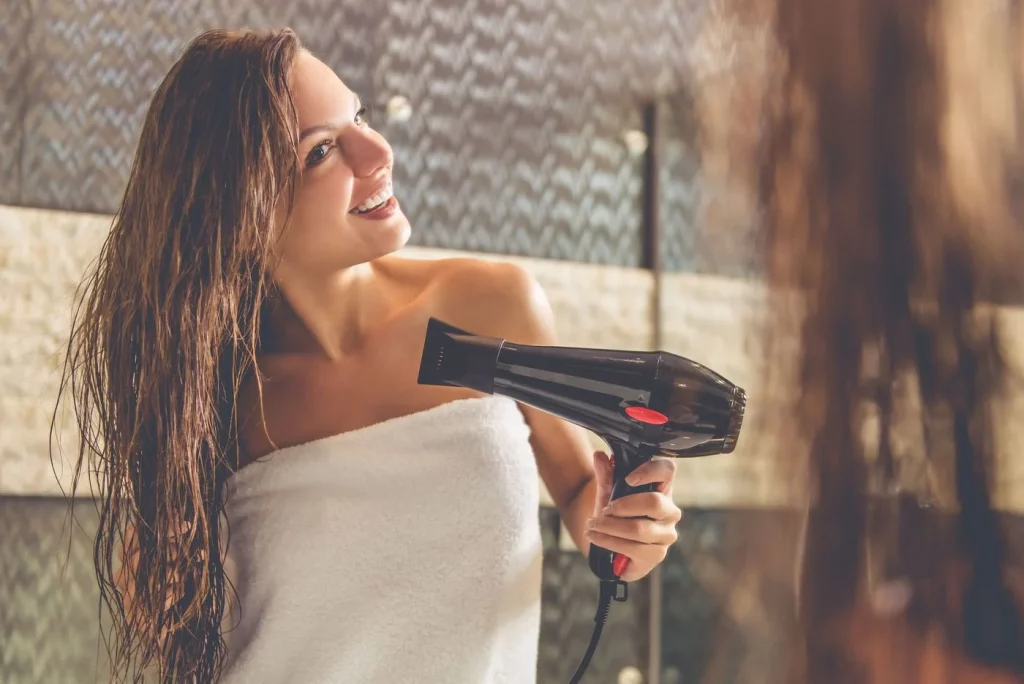
4. Tips for Using Hair Dryers and Flat Irons Safely
Now that you’ve prepared your hair and selected the right tools, here are some practical tips for using heat styling tools more safely:
a. Blow Drying Tips
- Avoid High Heat: Use the lowest heat setting possible for your hair type. Fine or damaged hair should be dried on a cool or medium setting.
- Keep Distance: Hold the blow dryer about 6-8 inches away from your hair to avoid direct heat exposure. This will help distribute heat more evenly and reduce concentrated heat damage.
- Use a Round Brush: When blow-drying, use a round brush to gently pull the hair away from the scalp. This technique helps prevent heat from being concentrated in one area and promotes volume without excessive damage.
b. Flat Iron Tips
- Work in Small Sections: To ensure even heat distribution, work in small sections. This will allow the flat iron to pass over each section more quickly and reduce the exposure time.
- Don’t Pass Over the Same Section Too Many Times: Passing the flat iron multiple times over the same section increases the risk of heat damage. Try to limit each pass to one or two times.
- Use the Right Size Flat Iron: Choose a flat iron with the right width for your hair length and texture. A narrower flat iron is better for fine or short hair, while a wider flat iron works well for thick or long hair.
5. Repairing Heat-Damaged Hair
If your hair has already been subjected to frequent heat styling and has experienced damage, it’s important to take steps to restore its health.
- Deep Conditioning Treatments: Use deep conditioning masks or protein treatments once a week to help repair damaged hair. Look for products containing ingredients like keratin, biotin, and vitamin E, which strengthen hair from within.
- Trim Regularly: Regular trims are essential to remove split ends and prevent the damage from traveling up the hair shaft.
- Use Moisturizing Products: Keep your hair hydrated by using moisturizing shampoos, conditioners, and leave-in treatments that nourish and repair dry, damaged strands.
Conclusion
Heat damage is a real concern for anyone who regularly uses hair dryers and flat irons, but with the right tools, preparation, and techniques, you can reduce the risk of damage while still achieving beautiful, styled hair. By selecting heat styling tools with adjustable temperature settings, protecting your hair with the right products, and using safe techniques, you can enjoy the benefits of heat styling without compromising the health of your hair. Additionally, if you’re dealing with heat-damaged hair, there are plenty of ways to repair and restore its health, ensuring that your hair remains vibrant, strong, and shiny for years to come.

